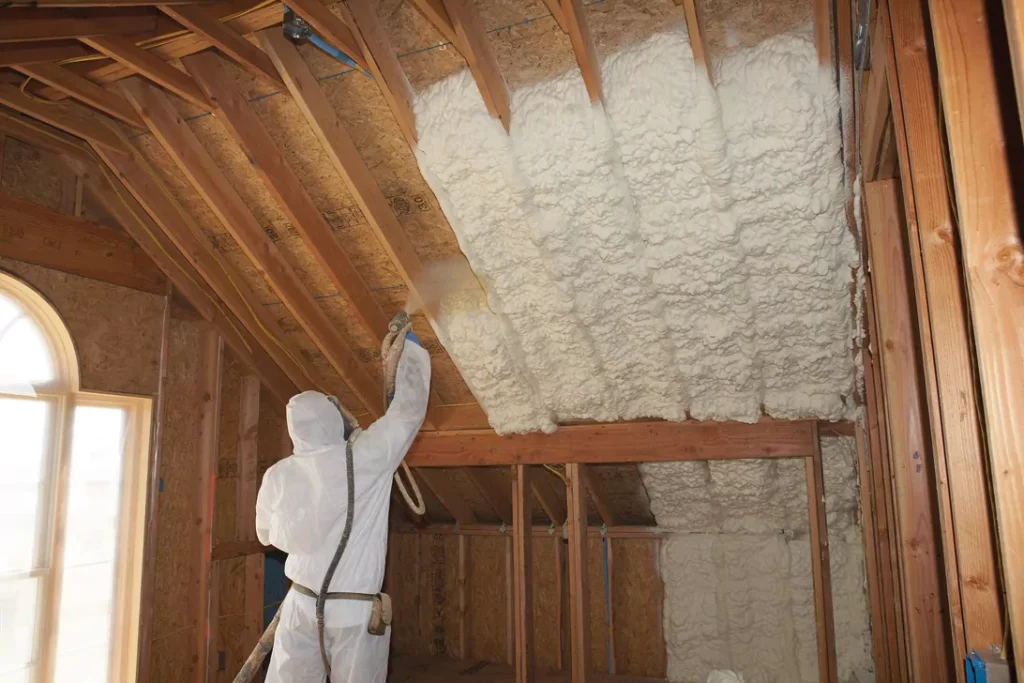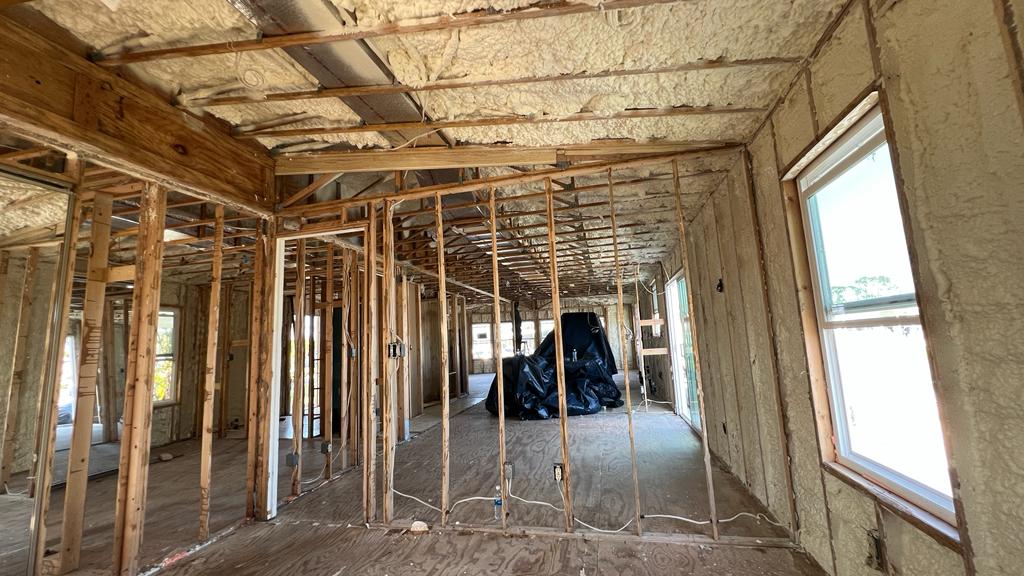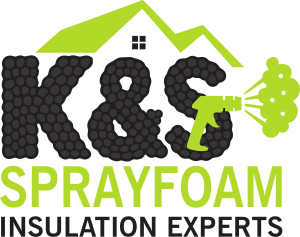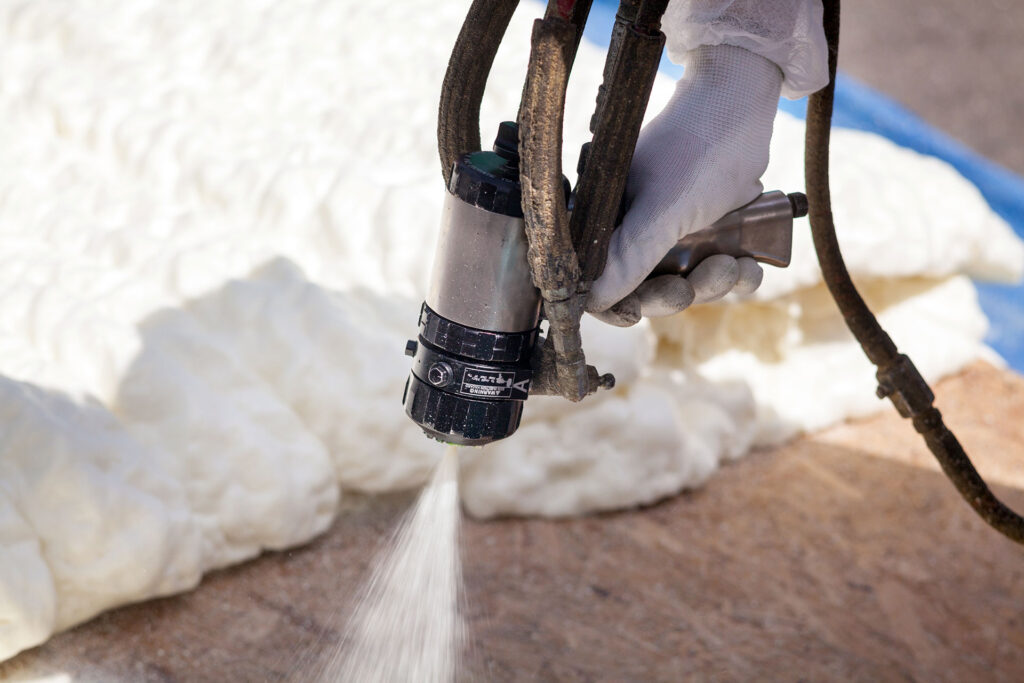Open-Cell Spray Foam

Composition
Open-cell spray foam is a lightweight polyurethane material that expands into a soft, spongy foam, trapping air in open cells for insulation.
Fire Safety
Contains fire-retardant additives, meeting Florida Building Codes for safety, though less fire-resistant than closed-cell foam.
Thermal Efficiency
With an R-value of ~3.5 per inch, it reduces heat transfer, saving up to $300/year on AC bills in Fort Myers’ hot climate (Florida Climate Zone 2, R-30 for ceilings).
Versatile
Sprayed as a liquid, it expands in seconds to fill attic or wall gaps. Takes 1–2 days for most homes.
Sound Absorption
Excels at dampening noise, perfect for Fort Myers homes near busy roads or in multi-family buildings, creating quieter living spaces.
Eco and Health Factors
It supports a greener planet by saving energy while being safely installed with simple protective measures like masks.
Close-Cell Spray Foam
Composition
Closed-cell foam is a two-part liquid spray made from isocyanates and polyol resin, along with catalysts and blowing agents. When mixed and sprayed, the liquid expands and hardens into a rigid foam with countless tiny, sealed cells.
Fire Safety
Closed-cell foam is a Class A fire-rated material, the highest classification for building materials, meaning it has a very low flame spread. Meeting standard building requirements that ensure the highest level of safety for your home.
Thermal Performance
Closed-cell foam is a highly efficient insulator with an R-value of R-6.0 to R-7.5 per inch. Its dense structure creates an air and vapor barrier, which is key to preventing heat transfer and moisture issues.
Installation Flexibility
Applied as a spray, the liquid foam expands to fill all gaps, cracks, and cavities, making it ideal for sealing and insulating hard-to-reach areas in walls and foundations.
Vapor Barrier
A closed-cell spray foam insulation functions as a highly effective vapor barrier, preventing moisture from passing through and protecting your building from mold, mildew, and water damage.
Durability and Structural Integrity
Closed-cell foam adds significant strength to your building's structure. It hardens into a rigid, dense material that reinforces walls and crawl spaces decks, helping to prevent racking and enhancing the overall resilience of your home against high winds and severe weather. This makes it an investment in both comfort and long-term structural integrity.




